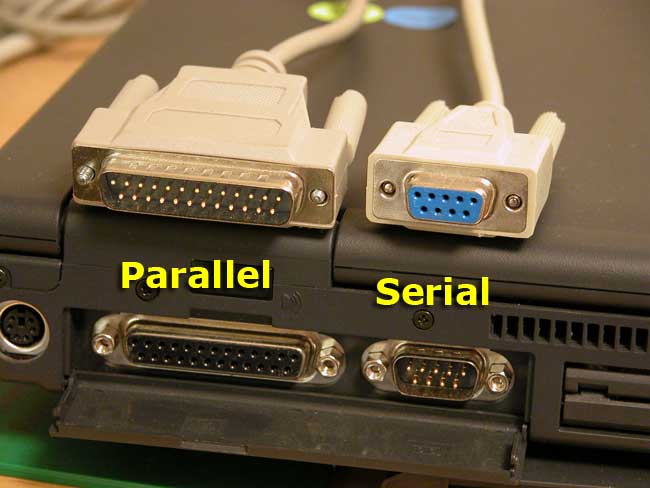Serial and Parallel Interfaces

In telecommunication and computer science, serial communication is the process of sending data one bit at a time, sequentially, over a communication channel or computer bus. This is in contrast to parallel communication, where several bits are sent as a whole, on a link with several parallel channels.
Serial and Parallel Transmission
Digital data transmission can occur in two basic modes: serial or parallel. Data within a computer system is transmitted via parallel mode on buses with the width of the parallel bus matched to the word size of the computer system. Data between computer systems is usually transmitted in bit serial mode . Consequently, it is necessary to make a parallel-to-serial conversion at a computer interface when sending data from a computer system into a network and a serial-to-parallel conversion at a computer interface when receiving information from a network. The type of transmission mode used may also depend upon distance and required data rate.

Parallel Transmission
In parallel transmission, multiple bits (usually 8 bits or a byte/character) are sent simultaneously on different channels (wires, frequency channels) within the same cable, or radio path, and synchronized to a clock. Parallel devices have a wider data bus than serial devices and can therefore transfer data in words of one or more bytes at a time. As a result, there is a speedup in parallel transmission bit rate over serial transmission bit rate. However, this speedup is a tradeoff versus cost since multiple wires cost more than a single wire, and as a parallel cable gets longer, the synchronization timing between multiple channels becomes more sensitive to distance. The timing for parallel transmission is provided by a constant clocking signal sent over a separate wire within the parallel cable; thus parallel transmission is considered synchronous .
Serial Transmission
In serial transmission, bits are sent sequentially on the same channel (wire) which reduces costs for wire but also slows the speed of transmission. Also, for serial transmission, some overhead time is needed since bits must be assembled and sent as a unit and then disassembled at the receiver.
Serial transmission can be either synchronous or asynchronous . In synchronous transmission, groups of bits are combined into frames and frames are sent continuously with or without data to be transmitted. In asynchronous transmission, groups of bits are sent as independent units with start/stop flags and no data link synchronization, to allow for arbitrary size gaps between frames. However, start/stop bits maintain physical bit level synchronization once detected.
Applications
Serial transmission is between two computers or from a computer to an external device located some distance away. Parallel transmission either takes place within a computer system (on a computer bus) or to an external device located a close distance away.
A special computer chip known as a universal asynchronous receiver transmitter (UART) acts as the interface between the parallel transmission of the computer bus and the serial transmission of the serial port. UARTs differ in performance capabilities based on the amount of on-chip memory they possess.

